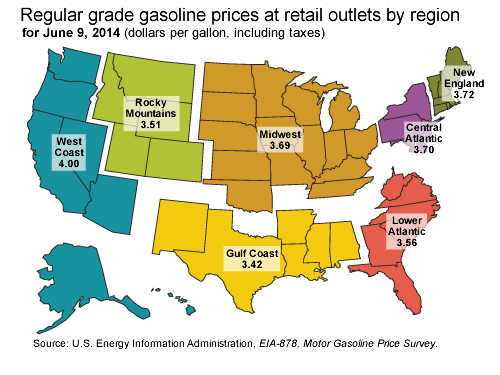

The below chart gives an illustration of just how significant these improvements in engine efficiency could be -- where the only data changed from the original chart is the use of efficiency data that Ricardo Engines' is currently achieving in field tests -- where adjusted ethanol prices are a clear winner.



Ethanol Prices: A simple linear regression statistical analysis shows that U.S. ethanol prices can be almost entirely explained (a R2 of .91) by the commodity price of #2 yellow corn (which is not used for human consumption). The extreme volatility in ethanol prices since July is the result of a series of initial over-reactions and then corrections in corn futures markets as to the actual severity of the drought in the Midwest on crop yields. As a result of this price increase, ethanol production levels have decreased up to 20% since July. With low or negative profit margins, many ethanol plants have either reduced output or temporarily shut down entirely.
As the below chart reflects, high corn feedstock costs are clearly having an adverse impact on U.S. ethanol production. The levelized (orange line) represents the theoretical monthly bio-fuel production level necessary to meet the yearly Renewable Fuel Standard's requirement of 13.95 billion gallons of bio-fuel use for 2012. In every month except January, actual production (purple line) was below the orange line.
Because of this shortfall in new bio-fuel production, the RFS was met using a combination of 3 market mechanisms: (1) Using RIN Credits from the previous year (where bio-fuel use exceeded RFS requirements); (2) Drawing down of existing bio-fuel inventories; (3) Bio-fuel imports (from Brazil).

| However long term, Supporters of ethanol must recognize a clear reality. As long as the adjusted price of ethanol (green line) is higher than the wholesale price of gasoline (blue line), ethanol use will always be criticized and lack acceptance by the U.S. Public even at low E-10 blend levels. |
This lower cost can happen in two ways: (1) lowering ethanol's production cost through cheaper feedstocks and better conversion technologies (e.g., cellulosic enzymes); (2) greater auto engine efficiency utilizing ethanol's higher octane levels (smaller engines using turbo-boost).
The Renewable Fuel Standard: The recent volatility and price spikes of ethanol from the Mid-western drought is a good illustration that the future of ethanol is not from corn. Feedstock and production technology diversity is needed from other sources (sorghum, cellulosic). In passing the Renewable Fuels Standard requiring ethanol blending with gasoline, Congress recognized this point by capping the use of corn feedstocks (which current ethanol production has almost approached).

For all the criticism that ethanol use receives, what is generally lost by the general public is the amazing success story that has been so quickly achieved in accomplishing national goals for greater energy security and job creation. This achievement would not have been possible without using the existing corn industry's infrastructure in the Mid-west.

Data Sources: -- Wholesale Ethanol prices are from the Chicago Board of Exchange.
-- Wholesale Gasoline Real Time Daily Trading Data.
Per numerous Sources (DOE, EPA), E-10 (10% ethanol) has ~3% less efficiency than E-0 (zero ethanol). Ethanol on a "net basis" has less BTU content, but higher octane.
-- Wholesale Gasoline prices are from the Chicago Board of Exchange.
-- Retail Gasoline prices are from Bloomberg's survey of national gas prices.
-- Corn Feedstock costs are calculated from Chicago Board of Exchange.
-- Distiller's Dried Grains (DDG) Futures (100 short tons) from CBOE.
-- Wholesale Ethanol Real Time Daily Trading Data.
No comments:
Post a Comment